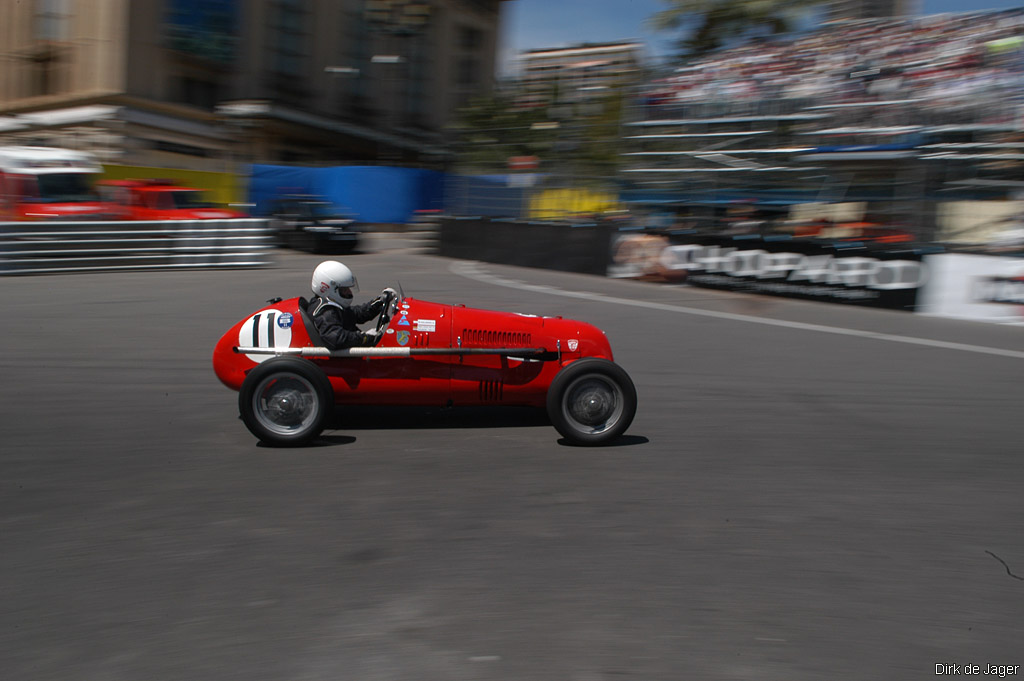Cisitalia D46
World War II had only just ended and most of Europe still lay in ruins. Day to day life was marked by a struggle for mere survival but the people were resilient, Even after life on the precipice, a hunger for sport and the spectacle of racing cars could not be extinguished. Commendatore Piero Dusio was a former Italian champion amateur racing driver and businessman. His company; Consorzio Industriale Sportivo Italia or Cisitalia had been established in the thirties for the manufacture of sport clothes, tennis rackets and bicycles. He commissioned Ing. Dante Giacosa, the designer of the Fiat Topolino to create a simple, inexpensive single-seater racing car which could get Italy racing again. Old pre-war racecars were being discovered or brought out of hiding on a regular basis but these were of an insufficient number and out of the reach of most people.
Cisitalia D46This he did in his free time away for the Fiat factory. The design utilized components from the Fiat 500 and 508C. Giacosa used a Fiat 1100 production engine with a preselector gearbox in which the actual change of gear was made with the clutch pedal, converted it to dry sump lubrication and increased the power to a whopping 62 bhp. The singular feature of this car was its sophisticated spaceframe, which owed itself to Giacosa’s wartime aeronautical experience and a secret cache of chrome-molybdenum that Piero Dusio had “acquired”. The space frame chassis and the body consisting of light alloy panels became known as the famous superleggera (“super-light”) construction technique. Ing. Giovanni Savonuzzi, an ex-Fiat experimental aero engineer knew of this cache and also joined the firm. Additional parts from Giacosa’s Topolino were used for the front and rear suspension.
The Cisitalia D46 was born. Hopelessly over matched on the faster circuits it could more than hold it’s own on the twisty city circuits that were springing up all over Italy after the war. Because of strict fuel rationing it was thought that because it would be difficult for the public to drive to outlying road courses the racing would be brought to them. Piero Taruffi was hired as the test and development driver and would go on to become their racing director. In testing some of the chassis tubes cracked but with the help of Professor Cicala of Turin Polytechnic a successful redesign was completed. This marriage of automotive, aeronautical and academic expertise would become the backbone of the motorsport industry in the post war future.
Cisitalia D46Full production could now begin and a series was established just for Cisitalias. Orders from all over Italy soon poured in. Even the great Nuvolari had opportunity to drive and of course win in this car. Other models were made all with spaceframes including some beautiful sports cars, one of which almost won the Mille Miglia again with Nuvolari. The Cisitalia’s greatest claim to fame was actually brought about by a mechanical failure. The Cisitalia had a hinged steering wheel that moved out of the way to allow drivers more room to get in and out. Unfortunately during the Coppa Brezzi in the Valentino Park circuit Nuvolari’s hinge had broke leaving him with the column and one spoke to drive with! Nuvolari besides himself frantically waved the steering wheel not wanting to have to pit but knowing he had no other choice. Because he actually drove a couple of laps without a working steering wheel he was given a heavy fine by the organizers only to be outweighed by the ecstasy to which he brought the crowd. Just as the Cooper and HVM had for England, Cisitalia helped to resurrect racing in Italy.










